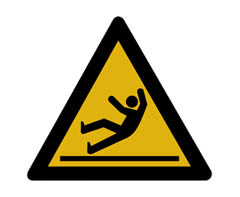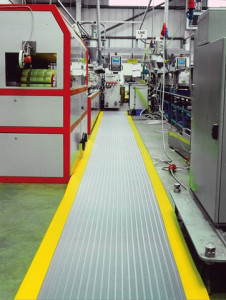How To Reduce Slips and Trips Risks In The Workplace
The Health and Safety at Work Act 1974 requires employers to ensure the health  and safety of all employees and anyone affected by their work within practical reason by balancing the level of risk against the measures needed to control the risk in relation to time, trouble and money. Such risks include slips and trips.
and safety of all employees and anyone affected by their work within practical reason by balancing the level of risk against the measures needed to control the risk in relation to time, trouble and money. Such risks include slips and trips.
The management of Healthy and Safety at Work Regulations 1999 require employers to assess risks and take actions to address them if necessary. The Workplace (Health, Safety and Welfare) Regulations 1992 require floors to be suitable, free from obstructions and in good condition. All members of staff should be able to move around safely. Safety Direct2U provide a wide range of safety equipment to help keep your workplace safe and secure from trips and slips such as anti slip flooring, floor markers and safety signage etc.
Controlling slips and trips in the workplace
The key to the control of slip and trip risk is to focus on the risks that are most appropriate to your workplace. This means the risks have a greater potential to cause harm. In a lot of cases, there are simple and straightforward measures that can be taken to control risks. An example of this is ensuring spillages are cleaned up promptly so people do not slip or cupboard drawers kept closed etc. In many cases, these measures are cheap, effective and simple.
The HSE provide a ‘Slips and trips Hazard spotting checklist’ which is designed to help identify hazards in the workplace and decide what action to take. This checklist includes potential scenarios for outdoors, doorways, entrances, corridors and many more. The HSE also have a ‘Slip and trips mapping tool’ which is an aid for safety representatives and others who have an interest of safety in the workplace. This highlights different areas of the workplace that may need anti-slip flooring, anti-slip matting, floor paint and safety signs etc.
For more information on Slip and Trips please visit www.hse.gov.uk/slips